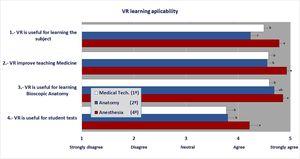
Background
The complexity of the subject content, and its 3D orientation in anatomy makes students difficult to learn, assimilate, and recapitulate the topics. There is a need for innovative teaching methods in anatomy for better understanding of the subject and improved performance of students. In this context, an attempt is made to use concept maps as a tool for learning anatomy.
Material and methods
After obtaining ethical committee approval and informed consent, 128 first-term MBBS students were divided into 2 groups, 64 in the study and the control group. After the lecture on each topic from anatomy (radial nerve, median nerve, and ulnar nerve), a pre-test was conducted on 128 MBBS students. Post-test multiple-choice questions-based assessment was conducted for both groups after 1 week of each lecture. Difference in knowledge by comparing the assessment scores of the study group and control group. A feedback form with a 5-point Likert scale was administered to all students at the end of 3 sessions. Mann–Whitney U-test and Wilcoxon signed-rank test were applied to check the significance (p≤.01) of the results.
Results
There was a statistically significant difference between the 2 groups during the pre-test for cognition, and total scores and the post-test for recall, cognition, and total scores. 98% of students perceived that the concept map-based approach helped better retain the topic.
Conclusions
Concept maps promote comprehensive learning and applying knowledge in new situations. From this study, we recommend that concept mapping can be a pedagogical tool in Anatomy.

